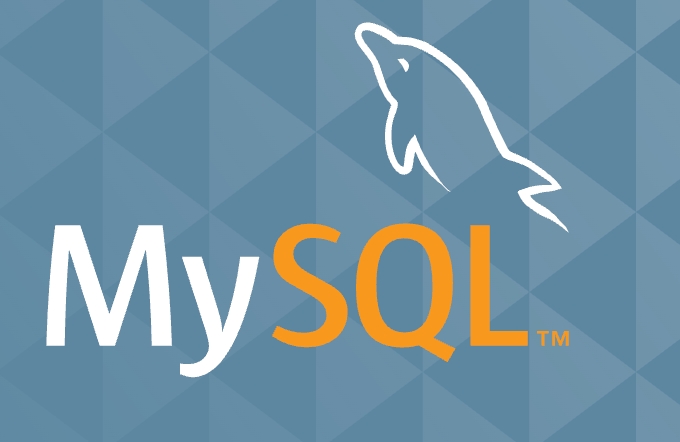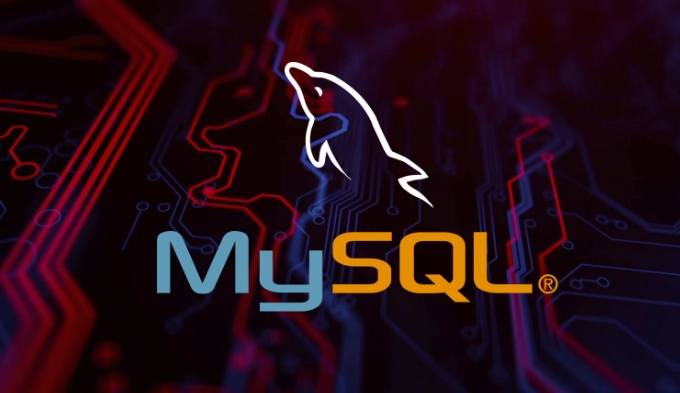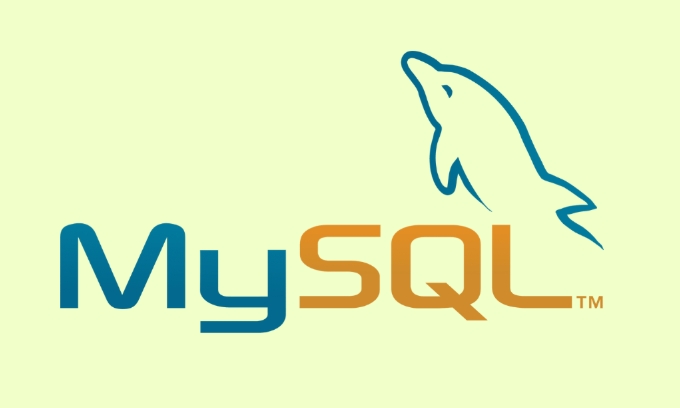Securing MySQL with Network Segmentation and VLANs
Network segmentation and VLAN can effectively improve MySQL security. 1. The network segmentation places the database on an independent subnet, restricting only authorized device access, preventing horizontal attacks, controlling traffic, and reducing attack surface; 2. VLAN implements logical isolation, divides dedicated services and management access paths, and reduces broadcast storms and sniffing risks; 3. Implementation suggestions include rational planning of IP and subnets, configuring strict firewall rules, regular audit permissions, enabling encrypted communications and strengthening log monitoring.

The security of MySQL databases not only depends on strong passwords and access control, but also in combination with network-level protection measures. Network segmentation and VLAN are two very effective means that can significantly improve the security of MySQL without sacrificing performance.

Why do I need network segmentation?
MySQL usually runs as a backend service and should not be directly exposed to the public network or share the same network environment with other applications. Through network segmentation, the database server can be restricted to a separate subnet, and only authorized application servers or management terminals can access it.
- Preventing lateral penetration attacks: If an attacker invades the web server but cannot access the subnet where the database resides, it will be difficult to further steal data.
- Control traffic flow: Rules can be set on a firewall or router to allow only specific IPs or ports to access database services (such as TCP 3306).
- Reduce the attack surface: Isolate non-essential services from the database to avoid affecting database security due to other service vulnerabilities.
How does VLAN enhance database security?
VLAN (virtual LAN) is a logical network division method. Even if all devices are physically connected to the same switch, communication isolation between different groups can be achieved through VLAN.

- Put MySQL in a dedicated VLAN: For example, the web server is in VLAN 10 and the database is in VLAN 20. The two are controlled communication through layer three switching or firewalls.
- Administrative access path: DBAs can access databases from management VLANs, while business systems can only connect through fixed interface VLANs.
- Avoid broadcast storms and sniff attacks: Broadcasts within the same VLAN will not affect other VLANs, reducing the possibility of man-in-the-middle attacks.
Implementation Suggestions
To truly play the role of network segmentation and VLAN, the following points need to be paid attention to:
- Plan IP and subnets reasonably : assign independent subnets to each VLAN and ensure clear and controllable routing policies.
- Configure strict firewall rules : Even in an internal network, iptables, firewalld, or hardware firewalls should be enabled to restrict access to sources and ports.
- Regular audit of network access rights : Check who can access the VLAN where the database resides and whether there are unnecessary open ports or services.
- Using encrypted communication : Even on the basis of network isolation, enable MySQL's SSL/TLS encrypted connection to prevent internal listening.
- Log monitoring cannot be ignored : logging and analyzing database connection attempts, query behavior and other logs, which helps to discover abnormal activities.
Summarize
Through reasonable network segmentation and VLAN division, the risk of MySQL being illegally accessed can be effectively reduced. Although these operations are at the infrastructure level and seem to be "invisible", they are an important part of building an overall security architecture. By doing this well and cooperating with good account management and encryption mechanisms, the network risks of MySQL can basically be minimized.

The above is the detailed content of Securing MySQL with Network Segmentation and VLANs. For more information, please follow other related articles on the PHP Chinese website!

Hot AI Tools

Undress AI Tool
Undress images for free

Undresser.AI Undress
AI-powered app for creating realistic nude photos

AI Clothes Remover
Online AI tool for removing clothes from photos.

Clothoff.io
AI clothes remover

Video Face Swap
Swap faces in any video effortlessly with our completely free AI face swap tool!

Hot Article

Hot Tools

Notepad++7.3.1
Easy-to-use and free code editor

SublimeText3 Chinese version
Chinese version, very easy to use

Zend Studio 13.0.1
Powerful PHP integrated development environment

Dreamweaver CS6
Visual web development tools

SublimeText3 Mac version
God-level code editing software (SublimeText3)
 How to audit database activity in MySQL?
Aug 05, 2025 pm 01:34 PM
How to audit database activity in MySQL?
Aug 05, 2025 pm 01:34 PM
UseMySQLEnterpriseAuditPluginifonEnterpriseEditionbyenablingitinconfigurationwithserver-audit=FORCE_PLUS_PERMANENTandcustomizeeventsviaserver_audit_events;2.Forfreealternatives,usePerconaServerorMariaDBwiththeiropen-sourceauditpluginslikeaudit_log;3.
 Optimizing MySQL for Financial Data Storage
Jul 27, 2025 am 02:06 AM
Optimizing MySQL for Financial Data Storage
Jul 27, 2025 am 02:06 AM
MySQL needs to be optimized for financial systems: 1. Financial data must be used to ensure accuracy using DECIMAL type, and DATETIME is used in time fields to avoid time zone problems; 2. Index design should be reasonable, avoid frequent updates of fields to build indexes, combine indexes in query order and clean useless indexes regularly; 3. Use transactions to ensure consistency, control transaction granularity, avoid long transactions and non-core operations embedded in it, and select appropriate isolation levels based on business; 4. Partition historical data by time, archive cold data and use compressed tables to improve query efficiency and optimize storage.
 Securing MySQL with Object-Level Privileges
Jul 29, 2025 am 01:34 AM
Securing MySQL with Object-Level Privileges
Jul 29, 2025 am 01:34 AM
TosecureMySQLeffectively,useobject-levelprivilegestolimituseraccessbasedontheirspecificneeds.Beginbyunderstandingthatobject-levelprivilegesapplytodatabases,tables,orcolumns,offeringfinercontrolthanglobalprivileges.Next,applytheprincipleofleastprivile
 Optimizing MySQL for Real-time Data Feeds
Jul 26, 2025 am 05:41 AM
Optimizing MySQL for Real-time Data Feeds
Jul 26, 2025 am 05:41 AM
TooptimizeMySQLforreal-timedatafeeds,firstchoosetheInnoDBstorageenginefortransactionsandrow-levellocking,useMEMORYorROCKSDBfortemporarydata,andpartitiontime-seriesdatabytime.Second,indexstrategicallybyonlyapplyingindexestoWHERE,JOIN,orORDERBYcolumns,
 Best Practices for Managing Large MySQL Tables
Aug 05, 2025 am 03:55 AM
Best Practices for Managing Large MySQL Tables
Aug 05, 2025 am 03:55 AM
When dealing with large tables, MySQL performance and maintainability face challenges, and it is necessary to start from structural design, index optimization, table sub-table strategy, etc. 1. Reasonably design primary keys and indexes: It is recommended to use self-increment integers as primary keys to reduce page splits; use overlay indexes to improve query efficiency; regularly analyze slow query logs and delete invalid indexes. 2. Rational use of partition tables: partition according to time range and other strategies to improve query and maintenance efficiency, but attention should be paid to partitioning and cutting issues. 3. Consider reading and writing separation and library separation: Read and writing separation alleviates the pressure on the main library. The library separation and table separation are suitable for scenarios with a large amount of data. It is recommended to use middleware and evaluate transaction and cross-store query problems. Early planning and continuous optimization are the key.
 How to use check constraints to enforce data rules in MySQL?
Aug 06, 2025 pm 04:49 PM
How to use check constraints to enforce data rules in MySQL?
Aug 06, 2025 pm 04:49 PM
MySQL supports CHECK constraints to force domain integrity, effective from version 8.0.16; 1. Add constraints when creating a table: Use CREATETABLE to define CHECK conditions, such as age ≥18, salary > 0, department limit values; 2. Modify the table to add constraints: Use ALTERTABLEADDCONSTRAINT to limit field values, such as name non-empty; 3. Use complex conditions: support multi-column logic and expressions, such as end date ≥start date and completion status must have an end date; 4. Delete constraints: use ALTERTABLEDROPCONSTRAINT to specify the name to delete; 5. Notes: MySQL8.0.16, InnoDB or MyISAM needs to be quoted
 How to implement a tagging system in a MySQL database?
Aug 05, 2025 am 05:41 AM
How to implement a tagging system in a MySQL database?
Aug 05, 2025 am 05:41 AM
Useamany-to-manyrelationshipwithajunctiontabletolinkitemsandtagsviathreetables:items,tags,anditem_tags.2.Whenaddingtags,checkforexistingtagsinthetagstable,insertifnecessary,thencreatemappingsinitem_tagsusingtransactionsforconsistency.3.Queryitemsbyta
 MySQL Database Cost-Benefit Analysis for Cloud Migration
Jul 26, 2025 am 03:32 AM
MySQL Database Cost-Benefit Analysis for Cloud Migration
Jul 26, 2025 am 03:32 AM
Whether MySQL is worth moving to the cloud depends on the specific usage scenario. If your business needs to be launched quickly, expand elastically and simplify operations and maintenance, and can accept a pay-as-you-go model, then moving to the cloud is worth it; but if your database is stable for a long time, latency sensitive or compliance restrictions, it may not be cost-effective. The keys to controlling costs include selecting the right vendor and package, configuring resources reasonably, utilizing reserved instances, managing backup logs and optimizing query performance.







